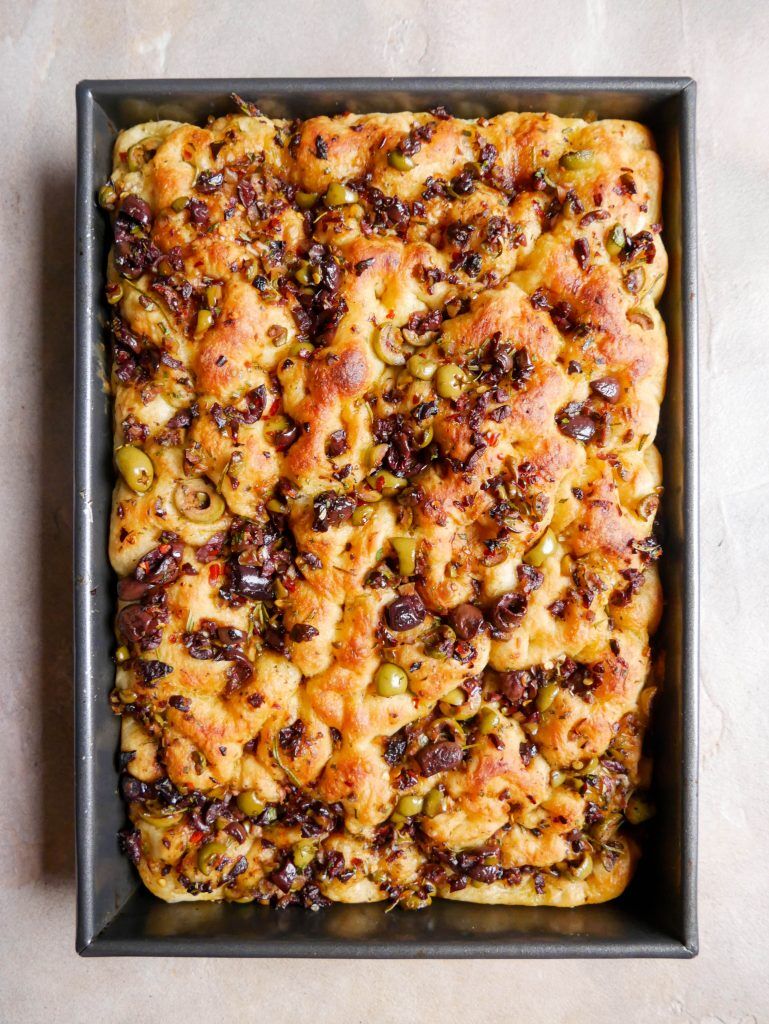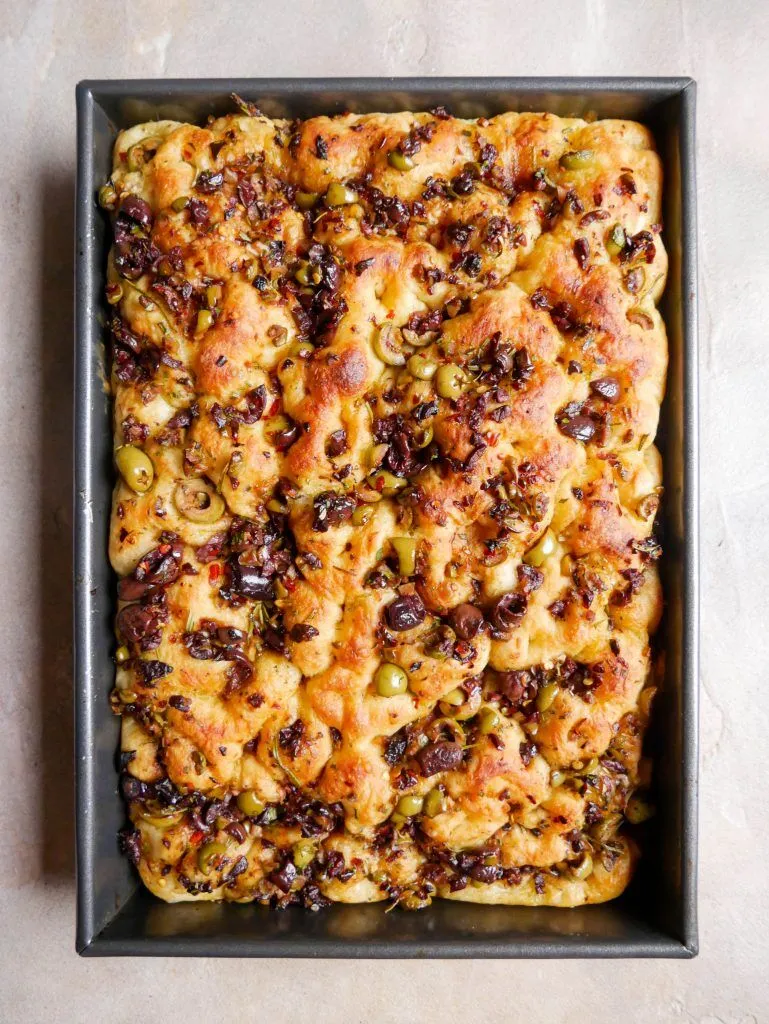Olive, Herb & Sticky Balsamic Focaccia
This olive, herb and balsamic focaccia is sticky, sweet, airy and fluffy on the inside and crunchy and golden on the outside. It’s a bread lovers dream!
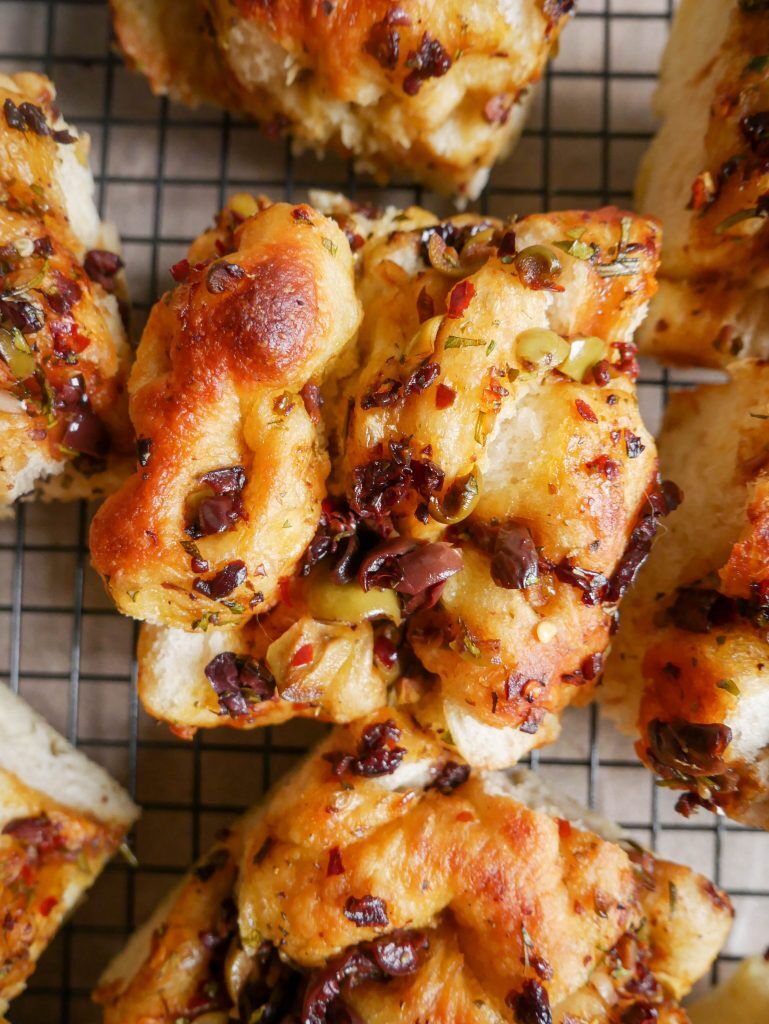
Olive, Herb & Sticky Balsamic Focaccia
This recipe is dedicated to all my olive and bread lovers! If you love olives and bread just as much I do then you are going to absolutely love this recipe. It combines the best of both worlds with an olive, herb and balsamic dipping sauce that is drizzled over a light and fluffy focaccia. This focaccia not skimp on the olives! When I saw the viral bread dipping sauce I thought, why not go directly to the source and create a bread recipe that incorporates it! It’s sweet, sticky, slightly spicy. full of fresh and dried herbs and has a slight crunch from the diced shallot. While I recommend you drizzle 4 tablespoons over the focaccia dough, no one is judging you if you decided to drizzle more!
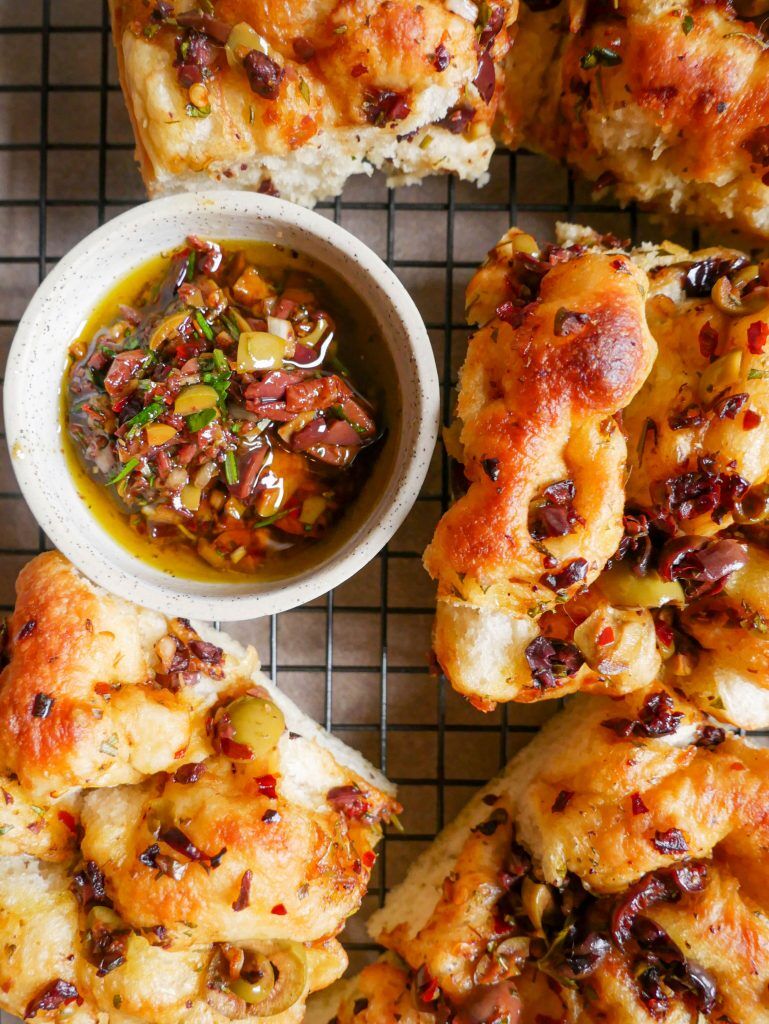
Bread Dipping Sauce
Bread dipping sauce seemed very on brand for me. It’s made with lots of olive oil, lots of olives and an abundance of herbs. I have used a sticky balsamic to add just a touch of sweetness. This is then drizzled over the focaccia dough and baked in the oven for up to 30 minutes. A good focaccia needs lots of olive oil to give it that golden and crunchy crust making this bread dipping sauce the perfect focaccia topping. While you can drizzle as much as you please onto your focaccia, I like to leave a little leftover to dip the focaccia into.
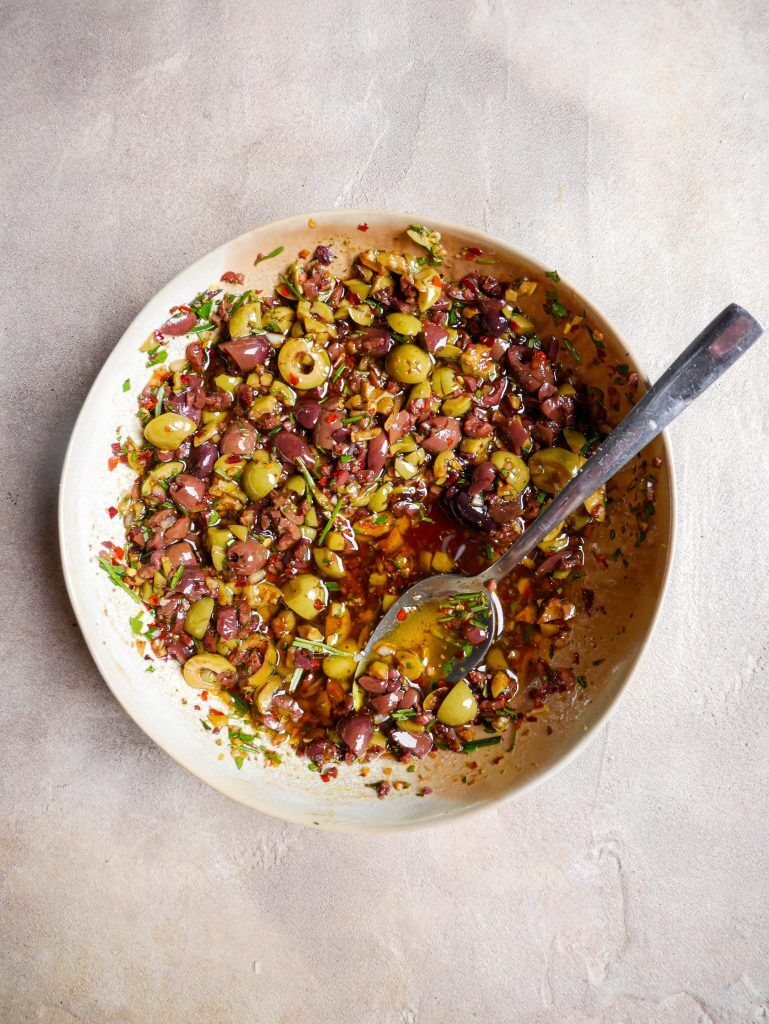
My top tips for making the best focaccia
Leave the dough to rest and rise as long as you can – if you have the time, I recommend leaving it for 24 – 48 hours (maximum 72 hours) as this will result in a fluffier and lighter dough. If you are short on time try and leave it for a minimum of 8 hours.
Use a high quality olive oil and don’t be shy with it – this is a recipe that relies heavily on olive oil not just for the taste but also for the texture and that golden and crunchy crust. It’s important we are not skimping on the quality which is why I recommend using Rich Glen olive oil.
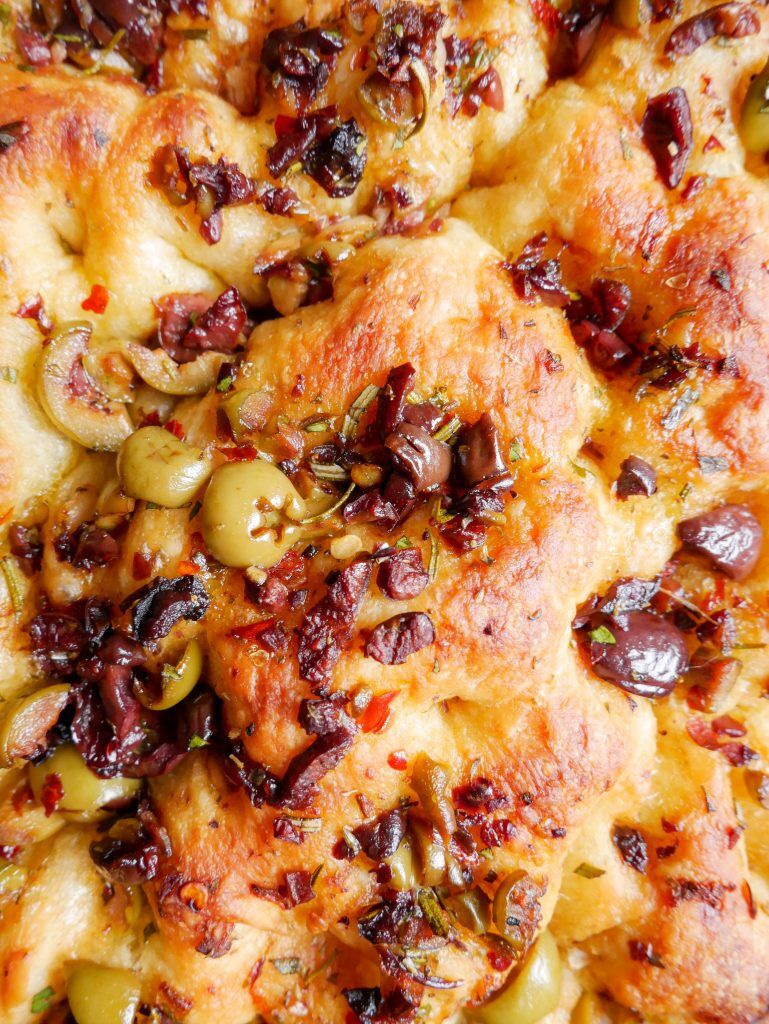
Find a warm spot in your house for the second rise – this will help the dough rise for its second rise when it’s been transferred to the baking tray. If you are making your focaccia in winter, a little trick I learnt is to leave the light on in your oven and let the focaccia dough rise in there. Some other warm spots in your house may be where your heater is or above your fridge or washing machine.
Don’t be afraid to get creative – focaccia’s can be so versatile and you can top it with whatever you please. Don’t be afraid to get creative and personalise it to your personal taste.
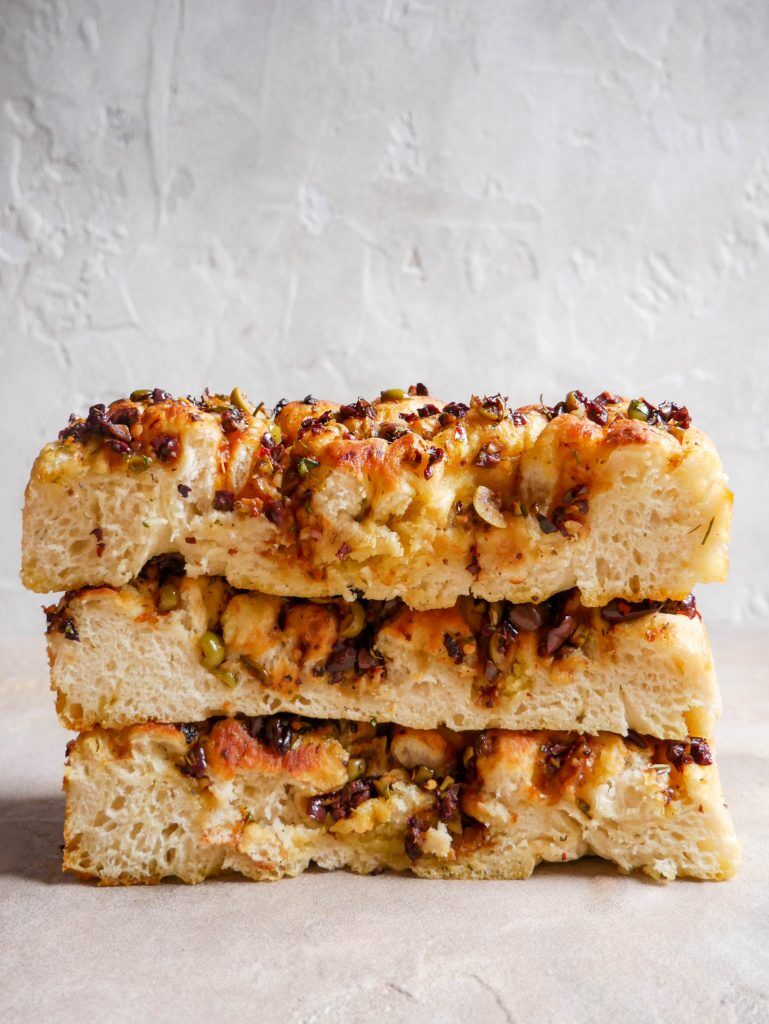
Frequently Asked Questions
Can I leave my dough to rise for a shorter period of time?
There are recipes that allow the dough to rise in a short amount of time however, this recipe will not work unless you leave your dough to rise for a minimum of 8 hours. I always recommend leaving it for as long as possible to get the best result.
What size baking tin do you use?
The baking tin I use is 34cm x 23cm x 5cm. It’s important your baking dish is large and deep enough for the focaccia to rise in.
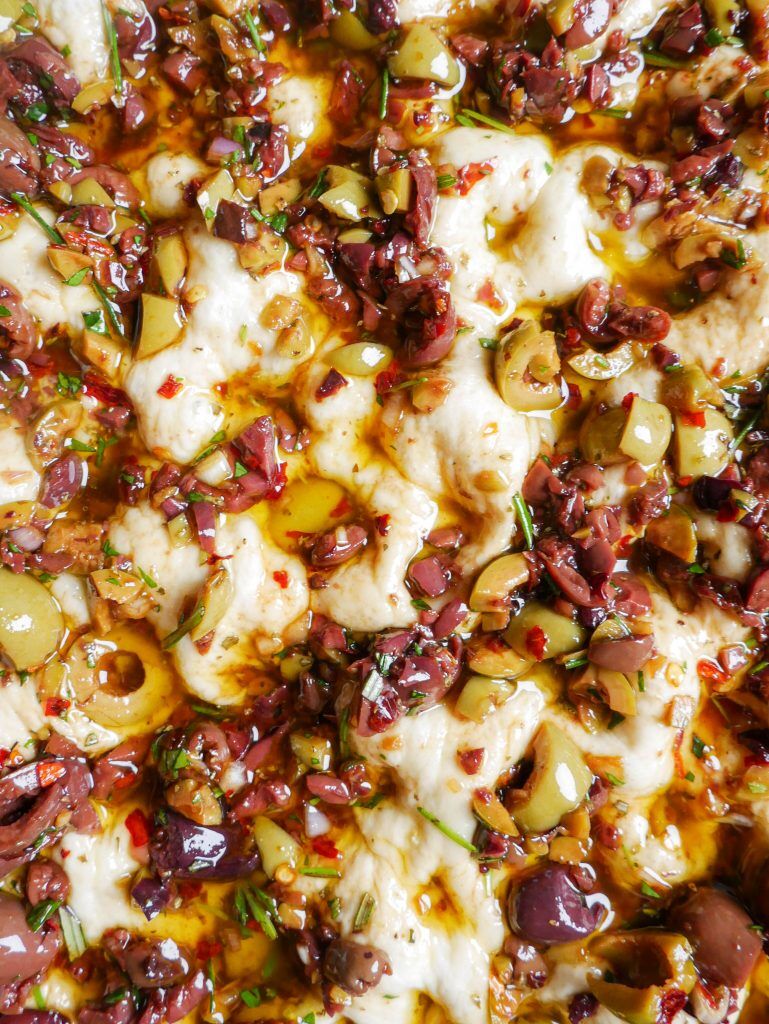
Can I use an active yeast?
Absolutely! The yeast I use is a non active dry yeast which is why we need to activate and feed it with the honey. If you are using an active yeast you can skip this first step and simply add the yeast to your flour with your water and salt.
How long does the focaccia keep for?
Bread is always at its most delicious on the day it’s made. I recommend freezing the bread on the day it has been made to maintain its freshness for as long as possible. If not, you can use it for up to 3 days before it goes stale. But keep in mind, stale focaccia can be turned into the best breadcrumbs!
